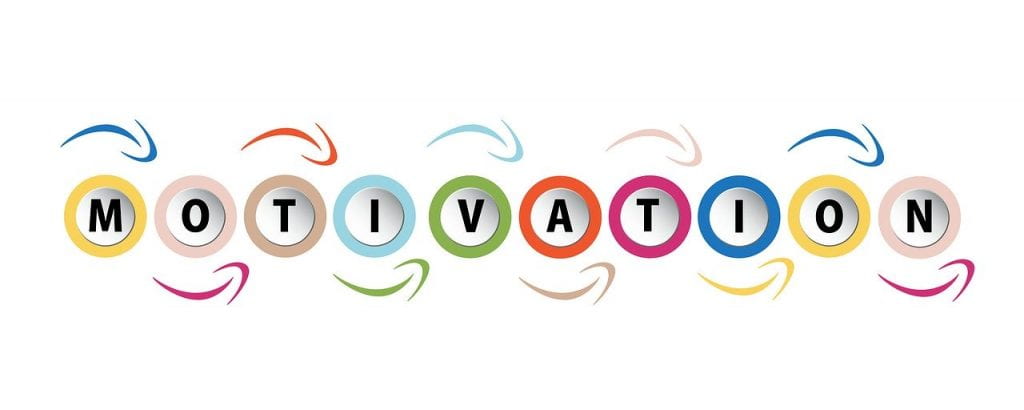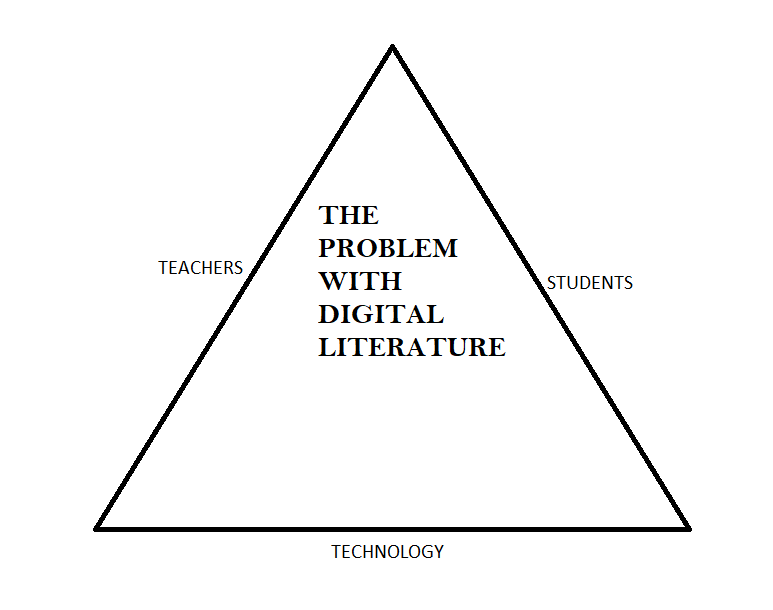
geralt / Pixabay
My journey into literature started very traditionally. Like all members of my generation (after boomer but before Z), I learned to read from first readers to chapter books, series fiction and comic books ( more Jughead than Nimona) and all of them in print. Consequently as an adult, my preference for recreational reading is for print and I do use digital journal articles for educational purposes but that is a matter of expediency rather than inclination. As I have documented my reading journey in previous blog posts so I will not go into that again.
(But you are more than welcome to read about my love of reading/books etc. Try this one when I fell in love with reading, or this one about the importance of storytellng, or this one about childhood favourites)
My personal preferences for text formats have leached into my professional practice. As an early career teacher I always favoured print texts for my classrooms because that was the medium I was confident and comfortable using. I was reluctant to explore and use digital literature because I wanted to conserve my faculties for behaviour management and pedagogical practices. I did not want to add in technology and digital literature to my already overloaded self.
Fast forward two years and my foray into the role of a teacher librarian has forced me to extend my practice into the digital realm. I have learned how to teach information literacy by navigating my way through ebooks, audiobooks and interactive books online. I have downloaded and experimented with book apps, created bento boxes and book trailers. Through this journey of discovery using digital literature and creating digital text, I have come to the conclusion that there are three main concerns when advocating for the inclusion of digital literature in the classroom. These concerns are, students, teachers and the technology itself.
The most commonly cited impediment for the implementation of digital literature into classrooms are the students themselves. I have previously detailed the multitudinal issues relating to reading and comprehension of digital texts in another blog (see here), so I will just give a synopsis now. Besides the usual issues of forgotten, uncharged and missing laptops, many students struggle with reading digital literature because they struggle with visual ergonomics in digital texts. Their inability to locate text leads to reduced comprehension and negative mental representation of the text (Mangen et al., 2013, p.66). This lack of comprehension, combined with poor digital literacy (see this post!) and the fact that many students are easily distracted by games and social media can negatively impact the integration of digital literature in classroom practice.
Teachers themselves are another liability when it comes to the implementation of digital literature in the classroom. Even though AITSL (2017) is very clear in the Teacher Standards that ICT needs to be included in teaching strategies (Std 2.6), and within resources selection (Std. 3.4), there is still a strong reluctance among many teachers to use digital literature meaningfully in their classroom practice. This disinclination to use digital literature could be due to a myriad of reasons as Hyndman (2018) explains in this article. One very pertinent reason is that many teachers feel pressured to suddenly become digital experts as they often assume they need to be the expert so as to instruct and assist students in their learning (Hyndman, 2018). Hyndman (2018) goes on further to say that these feelings of anxiety can exacerbate in schools with BYOD programs as the large variability in student device capability can cause increased technology anxiety. But there is no expectation that teachers be experts in understanding the complexities of individual devices nor in how the digital literature was created, only that they use them in their teaching practice (AITSL, 2017; ACARA, 2014).

geralt / Pixabay
The last crucial variable is the literature itself. Digital literature comes in many formats and ranges from scanned books on a website, ebooks, enhanced ebooks, linear narratives, hypertext nonlinear narratives and mobile applications for tablets and smartphones. Each of these literature formats may use different technology, require competency in different literacies and consequently need specific pedagogies for instruction. The combination of these new formats and technologies can be overwhelming for many teachers. Unfortunately, professional development for teachers regarding ICT and digital literature is often ad hoc and lack specific focus, which can inhibit the integration of these technologies into classrooms (Howard & Thompson, 2016).
When you view these issues, it seems evident that the best way to improve the breadth and variety of digital literature in classrooms, is to explicitly motivate, introduce, and teach educators about the various formats and their applicability to classroom practice (Korthagen, 2017; Hyndman, 2018). As teachers we have little control over student’s device selection and swiss cheese memories. But we can have control over our own learning and behaviour.
There are a myriad of learning courses available for teacher education, and teachers are encouraged to extend their professional development. This explicit instruction targeting ICT and digital literacies would be assumed to automatically lead to a cognitive change in teachers, which in turn would correlate to improved integration of digital literature in classroom practice. (Korthagen, 2017, p.390). But this assumption of correlation following a cognitive change is a fallacy as behavioural change requires more than just improved cognition, it requires motivation and affect too (Korthagen, 2017, p. 389-390)!
Therefore it seems foolhardy of ATSIL (2017) and ACARA (2014) to mandate the integration of technologies and multimodal literature into classroom practice without accounting for the requirements of behavioural change (Korthagen, 2017, p. 389-390). Simply dictating teachers to increase digital literature into classroom practice will not succeed in altering their behaviour, as this level of change requires cognition, affect AND motivation (Korthagen, 2017, p.390). Affect not only has an impact on teacher behaviour but also on student motivation. Teachers who are frustrated and disinclined with using digital literature are not going to translate the value of that format to their students. Whereas teachers who gain pleasure from using ICT are more enthusiastic about it, and this has a positive effect on their motivation too. Intrinsic motivation in teaching comes from teachers having a sense of autonomy, competence and relatedness in their profession (Korthagen, 2017, p.391). A teacher that has learned about digital literature, through formal professional developments or informal social learning is more likely to implement those new practices if they are enthused about it and that they can apply this knowledge in a manner of their choice.
So it appears the best way for a teacher librarian to introduce and promote digital literature in schools is to:
- Run training sessions for teaching staff and support staff about various digital literature formats and how they meet specific learning outcomes.
- Share your ideas, enthusiasm and motivation about digital literature, model, talk, blog and boast about how it works for your classroom, and most of all, be positive and laugh about it – After all, happiness and a smile are way more infectious than COVID-19.

Pexels / Pixabay
REFERENCES
ACARA. (2014j). Information and communication technology capability learning continuum. F-10 – General Capabilities Curriculum. Educational Services Australia. Retrieved from https://www.australiancurriculum.edu.au/media/1074/general-capabilities-information-and-communication-ict-capability-learning-continuum.pdf
AITSL. (2017). Standards for Teachers. Australian Institute for Teaching and School Leadership. Retrieved from https://www.aitsl.edu.au/teach/standards.
Howard, S., & Thompson, K. (2016). Seeing the system: Dynamics and complexity of technology integration in secondary schools. Educational Information Technology, 21, p.1877-1894. Retrieved from https://link.springer.com/content/pdf/10.1007/s10639-015-9424-2.pdf
Hyndman, B. (2018). Ten reasons teachers can struggle to use technology in the classroom. The Conversation [Blog]. Retrieved from https://theconversation.com/ten-reasons-teachers-can-struggle-to-use-technology-in-the-classroom-101114
Korthagen, F. (2017). Inconvenient truths about teacher learning: towards professional development 3.0. Teachers and Teaching, 23(4), p.387-405. Retrieved from https://www.tandfonline.com/doi/pdf/10.1080/13540602.2016.1211523?needAccess=true
Mangen, A., Walgermo, B. R. & Bronnick, K.A. (2013). Reading linear texts on paper versus computer screen: Effects on reading comprehension. International Journal of Educational Research, 58, 61-68.doi:10.1016/j.ijer.2012.12.002
Mantei, J., Kipscombe, K., & Kervin, L. (2018). Literature in a digital environment (Ch. 13). In L. McDonald (Ed.), A literature companion for teachers. Marrickville, NSW: Primary English Teaching Association Australia (PETAA)
Walsh, M. (2013). Literature in a digital environment (Ch. 13). In L. McDonald (Ed.), A literature companion for teachers. Marrickville, NSW: Primary English Teaching Association Australia (PETAA).
